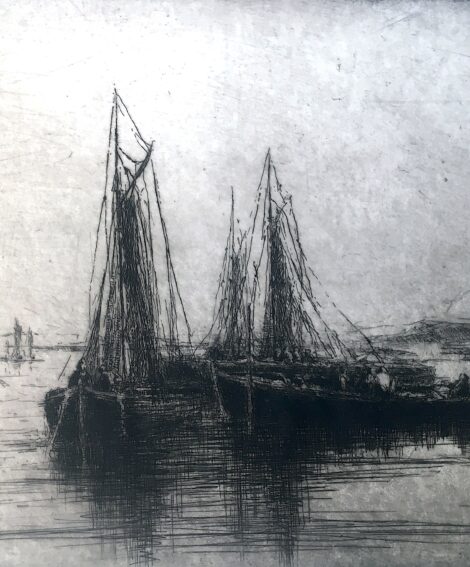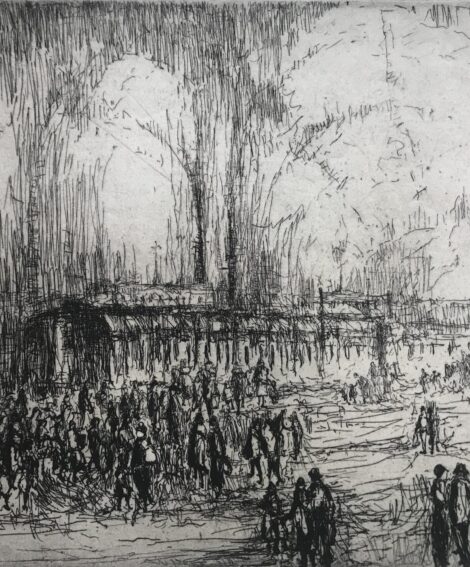A little about the artist and his background
F. H. Haagensen
1877 – 1943
Adventurer and romantic: a brief introduction
Born into a Norwegian family living in Grimsby in northern England, Frederick Hans Haagensen was an artist and adventurer who travelled extensively across Scandinavia, the Baltics, Russia and North Africa – experiences that fed his imagination to produce a lifetime of striking works full of drama and sensitivity.


Art and travel
As a young man, Haagensen travelled extensively. Initially, spending two years living in Belgium and Florence, where he studied art and music. He then visited Venice, Rome, Milan and Genoa – continuing his art studies wherever possible. A year in Spain afforded him the opportunity to visit North Africa and study Moorish art and architecture and the various peoples of the region before returning north through Germany and ultimately to Norway, where he explored the landscapes of his forebears.
After some time in Norway, he travelled to port cities around the Baltic Sea – Stockholm in Sweden, Liepaja and Ventspils in Latvia, and ultimately St. Petersburg in Russia. He then spent a period living simply in northern Finland, about which little is known, before returning once more to Norway. He also visited New York, Cuba and West Africa. These travels provided endless material for his work, which he would return to repeatedly in drawings, paintings and later also etchings.
Settling in the UK
He eventually settled in England, moving to Chelsea in London, where he worked and lived with his English wife Audrey (1900–1994) and son Hans (1925–2020) during the 1920s and 1930s. He worked mainly with oil painting, watercolour and charcoal, but after building himself an etching press also began to experiment with etching. Eventually this became his preferred medium, even though he adopted it late in life, aged forty-seven.
He had exhibitions as a graphic artist in New York, Boston and London, and was purchased by the British Museum, Manchester Art Gallery and by private collectors, including Queen Mary in 1930. He travelled repeatedly from England to Norway to paint and draw the Nordic landscapes.


Bradwell-on-Sea
After discovering a cottage in the Old Dutch style during a cycling trip in Essex, he decided to move there with his family. For the last seven years of his life he lived in the small village of Bradwell on Sea on the East Anglian coast, and he is buried in the old churchyard there.
After his death in 1943, his wife Audrey Haagensen organised several exhibitions of his pictures in Grimsby, Kendal, Southend on Sea, Chelmsford, and at Leighton House in London. She also managed an exhibition of his etchings in Oslo, in his old homeland, where The Munch Museum acquired several of his pictures and the National Museum of Art in Oslo also purchased a work. In 1977, she published a book of his etchings.